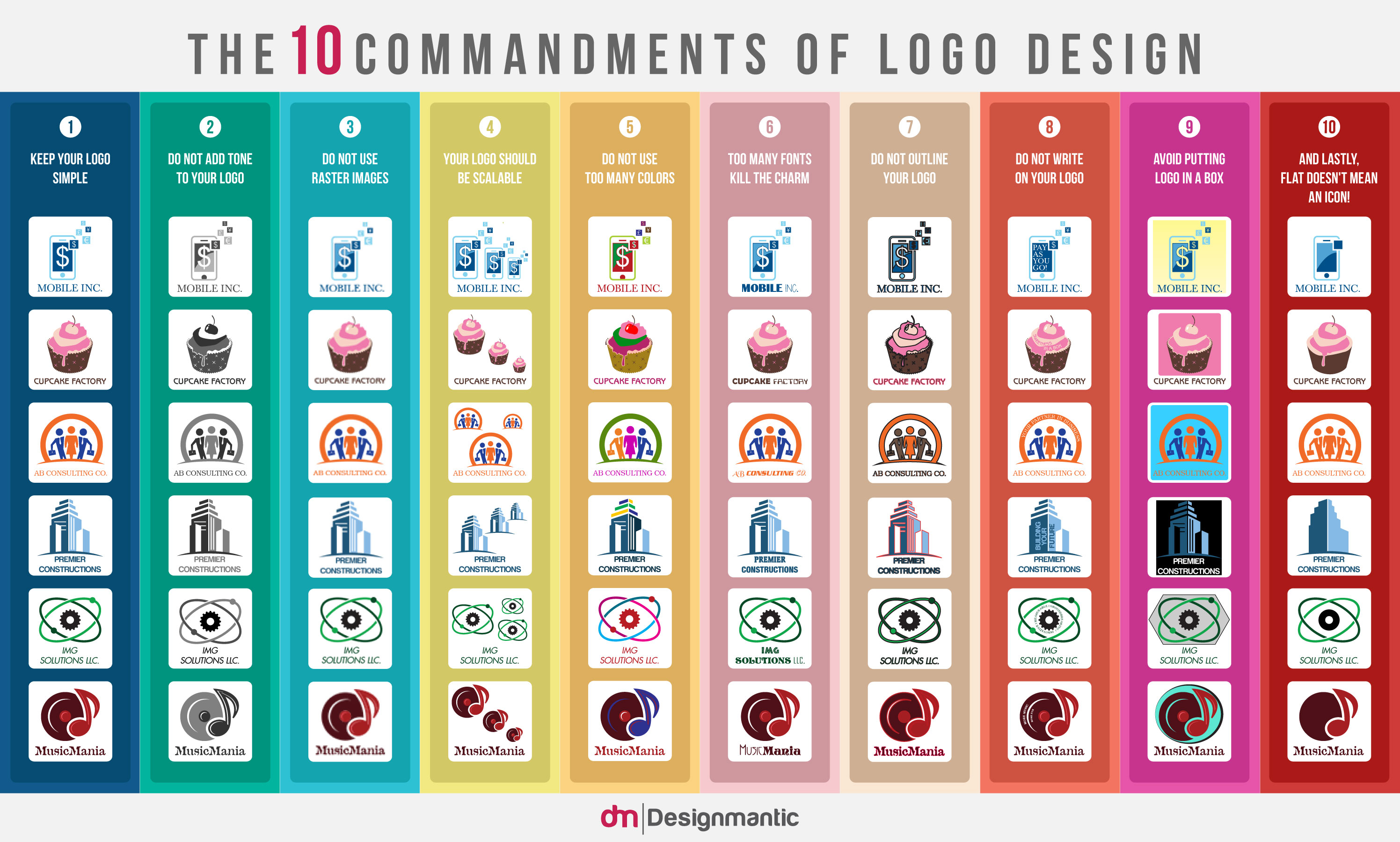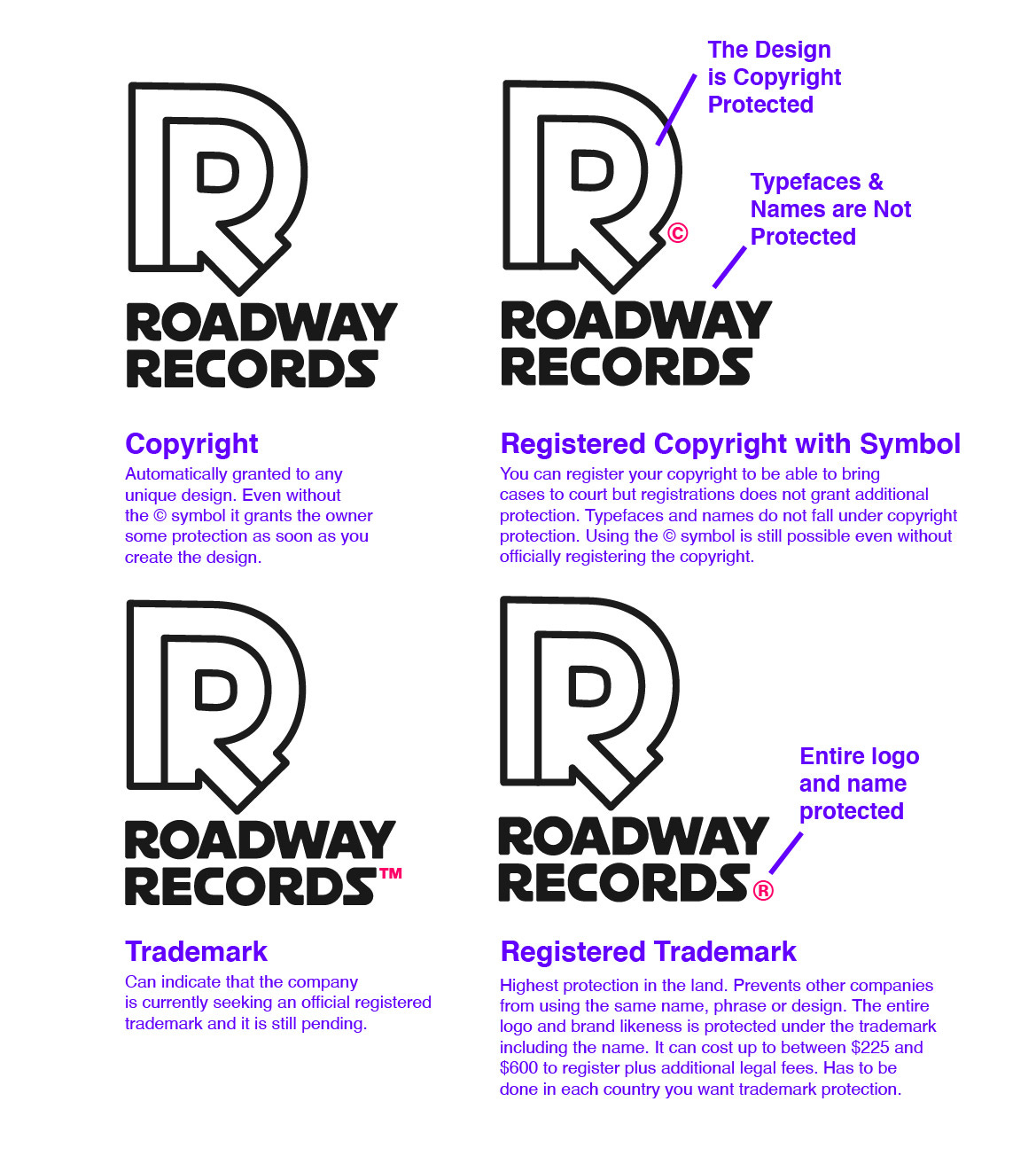Designing a logo is a crucial step for any brand. A good logo can make a lasting impression.
However, there are many pitfalls you should avoid in the process. A logo is often the first thing people notice about a brand. It represents your identity and values in a simple, visual form. So, designing a logo is not just about creativity; it’s about strategy. Mistakes can make your brand look unprofessional or confusing. This blog will guide you on what not to do when designing a logo, so you can avoid common errors and create a logo that truly stands out. For professional help, consider using a professional logo designer to ensure your logo is perfect from the start.

Credit: www.designmantic.com
Introduction To Logo Design
Designing a logo is a critical part of creating a brand’s identity. A well-designed logo not only represents your business but also makes a lasting impression on your audience. It is essential to understand the key elements that go into designing an effective logo and avoid common pitfalls.
Understanding The Importance Of A Logo
A logo is more than just a visual mark; it is the face of your brand. A strong logo can communicate your company’s values, mission, and personality. It helps establish brand recognition and can set you apart from competitors. An effective logo should be simple, memorable, and versatile.
Consider these key points:
- Simplicity: A simple logo is easier to recognize and remember.
- Memorability: A memorable logo leaves a lasting impression on your audience.
- Versatility: A versatile logo works well across different mediums and sizes.
- Relevance: A relevant logo aligns with your brand’s identity and message.
Common Misconceptions About Logo Design
Many people have misconceptions about what makes a good logo. Here are some common myths:
- More detail is better: Overly complex logos can be hard to recognize and reproduce.
- Trendy designs are best: Trends fade; a timeless design lasts.
- Logos should explain everything: A logo should represent, not explain.
- Color is everything: A good logo works in black and white too.
Understanding these misconceptions can help you avoid mistakes and create a logo that effectively represents your brand.
By focusing on these elements and avoiding common pitfalls, you can design a logo that truly stands out and resonates with your audience. Remember, a well-designed logo is an investment in your brand’s future.
Avoid Overcomplicating The Design
When designing a logo, simplicity is key. A complex logo can confuse your audience and dilute your brand message. Overcomplicating the design can lead to several issues, making it essential to focus on clear and simple visuals.
The Pitfalls Of Complex Logos
A complex logo often includes too many elements, colors, or intricate details. This can make the logo hard to recognize and remember. Here are some common pitfalls:
- Visual Clutter: Too many details make the logo look messy.
- Scaling Issues: Complex logos don’t scale well for smaller sizes.
- Printing Problems: Intricate designs are harder to print clearly.
- Brand Confusion: Overly detailed logos can confuse your audience.
These pitfalls highlight the importance of keeping your logo design simple and clear.
How Simplicity Enhances Recognition
Simple logos are easier to recognize and remember. They create a strong, clear brand image that sticks in people’s minds. Here’s why simplicity works:
- Memorability: Simple logos are easier to recall.
- Versatility: They look good on different mediums and sizes.
- Timelessness: Simple designs stay relevant longer.
- Professionalism: A clean design looks more professional.
Simplicity enhances recognition by ensuring your logo is clear and effective in conveying your brand message.
Steering Clear Of Trend-driven Designs
Creating a logo that stands the test of time is crucial. Many designers fall into the trap of following trends. This might make your logo look contemporary, but it can also date it quickly. Learn why avoiding trend-driven designs can benefit your brand.
Why Trends Can Be Limiting
Trends come and go. A logo based on a current trend can become outdated in a few months. This forces you to redesign, costing time and money. Instead, focus on what makes your brand unique.
Trend-driven designs often lack originality. They make your brand look like many others. Your logo should set you apart, not blend in. A unique logo tells your brand’s story and builds recognition.
Focusing On Timelessness Over Trendiness
A timeless logo endures. It remains relevant and effective for years. Think of iconic logos like Nike or Apple. They are simple, memorable, and have stood the test of time.
Create a logo with classic elements. Use simple shapes and limited colors. Avoid overly complex designs. These principles ensure your logo stays fresh. It also helps in different mediums, from business cards to billboards.
| Trend-Driven Designs | Timeless Designs |
|---|---|
| Follow current fashion | Based on classic principles |
| Quickly become outdated | Remain relevant for years |
| Blend in with others | Stand out uniquely |

Credit: kreafolk.com
Refrain From Using Too Many Colors
Designing a logo requires a delicate balance. One common mistake is using too many colors. This can make your logo look cluttered and unprofessional. A logo with excessive colors is hard to reproduce in different formats. It can also confuse your audience. Keeping your color palette simple ensures your logo remains versatile and memorable.
The Impact Of Excessive Colors On Versatility
Too many colors can limit your logo’s versatility. Here are some key points to consider:
- Reproduction Issues: Logos with multiple colors are harder to print. They might not look good in black and white or grayscale.
- Brand Consistency: A complicated color scheme can lead to inconsistencies across various platforms. This dilutes your brand’s identity.
- Visual Clarity: Simple designs are more recognizable. Too many colors can distract and confuse viewers.
Tips For Choosing An Effective Color Palette
Choosing the right colors is crucial. Here are some tips to help you select an effective color palette:
- Understand Your Brand: Identify the emotions you want to convey. Different colors evoke different feelings.
- Limit Your Palette: Stick to two or three main colors. This keeps your design clean and professional.
- Use Color Theory: Complementary colors work well together. Study the color wheel to find the best combinations.
- Consider Your Audience: Think about your target audience’s preferences. Colors can have different meanings in different cultures.
- Test Your Design: See how your logo looks in different sizes and backgrounds. Make sure it remains clear and effective.
By following these tips, you can create a logo that is both impactful and versatile. A well-chosen color palette enhances your brand’s identity and ensures consistency across various platforms.
Not Considering Scalability And Flexibility
When designing a logo, scalability and flexibility are crucial. Many designers overlook these aspects, leading to logos that fail to adapt across different mediums and sizes. This oversight can result in a compromised brand identity.
The Importance Of Scalable Logos
A scalable logo maintains its quality and clarity at any size. Whether it’s on a business card or a billboard, the logo should remain sharp and legible. Scalability ensures your brand is always represented well.
Consider these points for scalable logos:
- Vector graphics are preferred for their ability to scale without losing quality.
- Avoid intricate details that may blur or get lost when resized.
- Test your logo at different sizes to ensure visibility and clarity.
Ensuring Your Logo Works Across Various Mediums
Logos must be flexible enough to work across various mediums. From digital screens to printed materials, your logo should look consistent and professional. This adaptability is key to maintaining a cohesive brand presence.
Here are some tips:
- Create different versions of your logo, including monochrome and simplified versions.
- Ensure your logo looks good in both RGB for screens and CMYK for print.
- Test your logo on different backgrounds to check for contrast and visibility.
By considering these aspects, you ensure your logo maintains its integrity and impact, no matter where it’s displayed.
Avoiding Poor Typography Choices
Choosing the right typography is crucial for creating an effective logo. Poor typography can weaken your brand’s message and make your logo less memorable. Let’s explore the role of typography in logo design and common mistakes to avoid.
The Role Of Typography In Logo Design
Typography plays a significant role in logo design. It helps convey your brand’s personality and values. The right font can make your logo stand out and be easily recognizable.
Consider the following points to understand the importance of typography:
- Brand Identity: Typography reflects your brand’s identity and tone.
- Readability: Clear and legible fonts ensure your logo is easily readable.
- Memorability: Unique typography helps in making your logo memorable.
Common Typography Mistakes To Avoid
Here are common mistakes to avoid when choosing typography for your logo:
- Overly Complex Fonts: Avoid using overly intricate fonts. They can make your logo hard to read.
- Too Many Fonts: Using multiple fonts in a logo can create a cluttered look. Stick to one or two fonts.
- Poor Kerning: Improper spacing between letters can affect readability. Ensure consistent spacing.
- Inappropriate Font Style: Choose a font that matches your brand’s personality. A playful font won’t suit a law firm.
By keeping these points in mind, you can avoid poor typography choices and create a logo that truly represents your brand.
Steering Clear Of Generic Or Overused Symbols
Creating a unique logo is essential for brand recognition. Avoiding generic or overused symbols is crucial. A logo should reflect a brand’s identity and stand out. Using clichéd symbols can harm this goal.
The Dangers Of Clichéd Symbols
Many businesses use generic symbols. These include light bulbs for ideas, globes for international businesses, and gears for engineering firms. Such symbols are overused and do not stand out.
Using these symbols can make a brand look unoriginal. It can confuse potential customers. They might mistake your brand for another. This can lead to lost business opportunities.
Overused symbols may also lack emotional connection. Customers are less likely to remember a logo that blends in with many others. This can reduce brand loyalty and recognition.
How To Create A Unique And Memorable Logo
To create a unique logo, start with brainstorming. Think about what makes your brand special. Consider your brand values, mission, and target audience.
- Research competitors: See what symbols they use. Aim to be different.
- Use meaningful elements: Include symbols that represent your brand’s core values.
- Keep it simple: A simple design is often more memorable.
- Avoid trends: Trends change. A timeless logo is more effective.
Here is a comparison table to illustrate the difference between clichéd and unique symbols:
| Generic Symbol | Unique Symbol |
|---|---|
| Light bulb | Custom abstract shape |
| Globe | Stylized map outline |
| Gear | Creative mechanical design |
Remember, a logo is a visual representation of your brand. It should be unique, memorable, and reflective of your brand’s identity.
Ignoring The Target Audience
Designing a logo without considering the target audience is a common mistake. A logo must connect with its intended audience to be effective. Ignoring this can lead to a design that fails to communicate the brand’s message.
Understanding Your Audience’s Preferences
Before starting the design process, it’s crucial to understand your audience. Research their demographics, interests, and behaviors.
- Demographics: Age, gender, location, and income level.
- Interests: Hobbies, preferences, and lifestyle.
- Behaviors: Purchasing habits and online activities.
This information helps create a logo that appeals to their tastes and expectations.
Designing A Logo That Resonates With Your Target Market
Once you understand your audience, focus on creating a logo that resonates with them.
- Color Scheme: Use colors that evoke the right emotions. For example, blue can signify trust and professionalism.
- Typography: Choose fonts that match the brand’s personality. A playful brand might use a whimsical font, while a corporate brand might prefer a sleek, modern typeface.
- Imagery: Include symbols or icons that are meaningful to your audience. For example, a fitness brand might use a dumbbell icon.
These elements ensure the logo speaks directly to the target market, fostering a strong brand connection.
Summary
| Aspect | Details |
|---|---|
| Demographics | Age, gender, location, income level |
| Interests | Hobbies, preferences, lifestyle |
| Behaviors | Purchasing habits, online activities |
| Color Scheme | Colors that evoke appropriate emotions |
| Typography | Fonts matching the brand’s personality |
| Imagery | Meaningful symbols or icons |
By understanding your audience and designing a logo that resonates, you ensure your brand stands out and connects with your target market.
Neglecting Proper Feedback And Testing
Designing a logo is more than just creating an attractive visual. Neglecting proper feedback and testing can lead to a logo that fails to resonate with your audience. It’s crucial to understand the significance of these steps to ensure your logo is effective and well-received.
The Value Of Collecting Feedback
Collecting feedback is essential to gauge the initial reaction to your logo design. Feedback helps identify areas that may need improvement and ensures the design aligns with your brand’s identity.
Engage with diverse groups, including team members, industry experts, and potential customers. Their insights can provide a well-rounded view of your design’s strengths and weaknesses.
| Feedback Source | Reason |
|---|---|
| Team Members | Understand internal perspectives and align with company vision. |
| Industry Experts | Gain professional insights and ensure market relevance. |
| Potential Customers | Ensure the logo resonates with your target audience. |
Effective Methods For Testing Your Logo Design
Testing your logo design is crucial to ensure it performs well in various contexts. Here are some effective methods:
- A/B Testing: Present two versions of your logo to a sample audience. Evaluate which version performs better based on their preferences.
- Surveys: Use online surveys to gather quantitative data. Ask specific questions about the logo’s appeal, clarity, and memorability.
- Focus Groups: Organize small group discussions. Gather detailed feedback on the logo’s impact and any emotional responses it evokes.
Incorporate the feedback and testing results into your final design. It ensures your logo is not only visually appealing but also effectively communicates your brand’s message.

Credit: lindsaymarsh.substack.com
Frequently Asked Questions
What Are Common Logo Design Mistakes?
Common mistakes include using too many colors, complex designs, and unclear fonts. Avoid trends that can quickly become outdated. Simplify your design for better recognition.
Why Avoid Overly Complex Logo Designs?
Complex designs are hard to recognize and remember. Simple logos are more effective and versatile. They work well on various platforms and sizes.
Should I Follow Trends In Logo Design?
Trends can make your logo look outdated quickly. Instead, aim for a timeless design. Timeless logos stay relevant longer and build lasting brand recognition.
How Important Is Font Choice In Logo Design?
Font choice impacts readability and brand perception. Choose a font that is clear and reflects your brand’s personality. Avoid overly decorative fonts.
Conclusion
Designing a logo involves many crucial steps. Avoid common mistakes. Keep designs simple and memorable. Stay away from overly complex elements. Need professional help? Consider hiring a skilled logo designer on Fiverr. This can help you create a unique and effective logo.

I have been working as an SEO Expert in Bangladesh for a long time and now providing the best SEO Service in Bangladesh. With the approach to Semantic SEO that eschews superfluity. I can get your business web page at the top of the SERP list. Using the latest digital marketing trends, I can enhance your online visibility and drive more website traffic.
